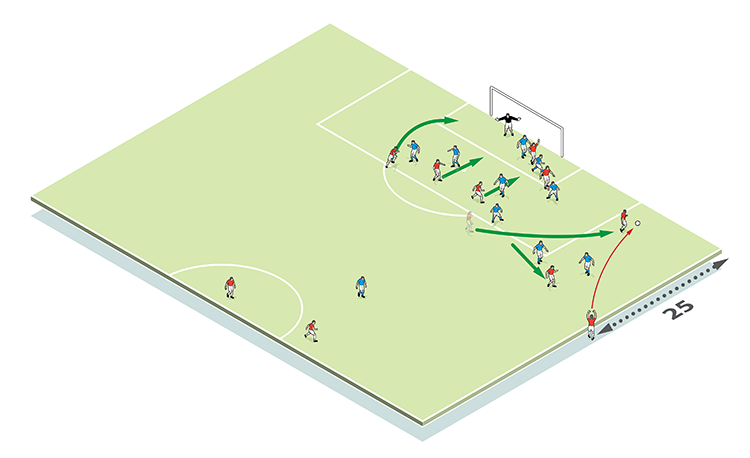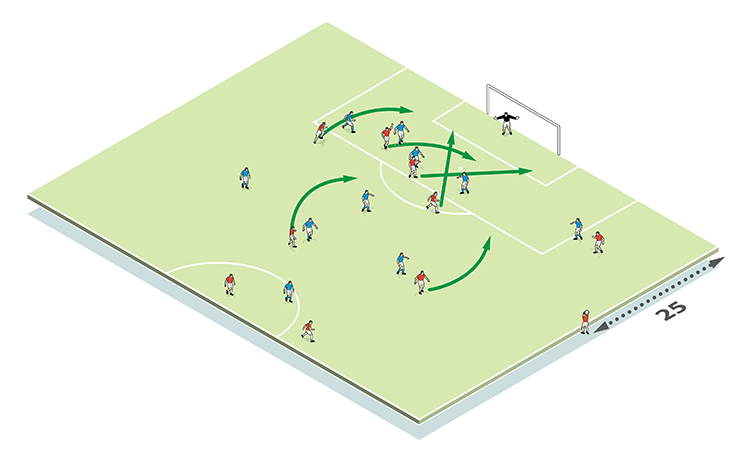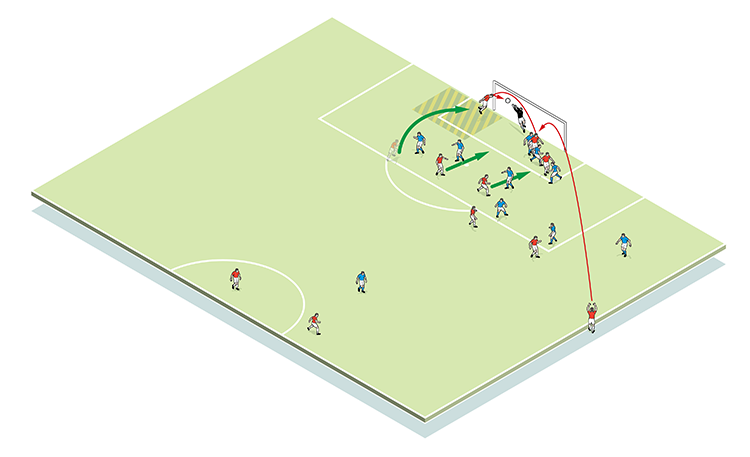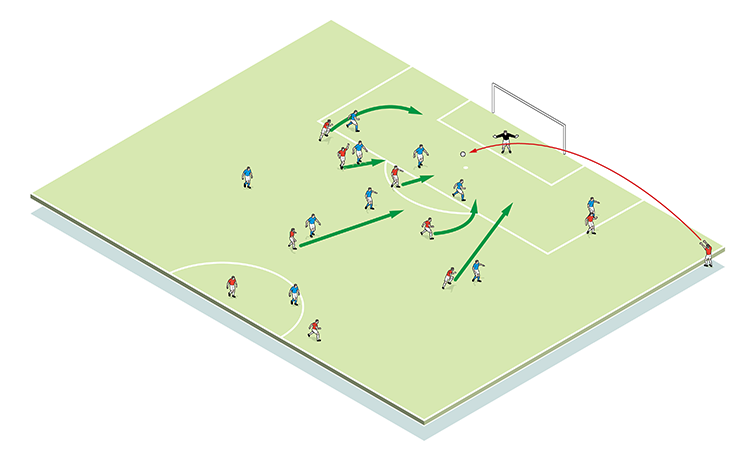




OUR BEST EVER OFFER - SAVE £100/$100
JOIN THE WORLD'S LEADING PROFESSIONAL DEVELOPMENT PROGRAMME
- 12 months membership of Elite Soccer
- Print copy of Elite Player & Coach Development
- Print copy of The Training Ground
You are viewing 1 of your 1 free articles
Attacking throws in the final third
This session looks predominantly at the tactical versatility of the long throw in the final third (although also highlights the use of the short throw). The technique behind ‘going long’ is practised with the emphasis on quality, backed up by good movement and a desire from players to attack the ball and score.
| Area | Half pitch |
This session looks predominantly at the tactical versatility of the long throw in the final third (although also highlights the use of the short throw). The technique behind ‘going long’ is practised with the emphasis on quality, backed up by good movement and a desire from players to attack the ball and score.
It’s important to practise attacking throws, but particularly the long throw, as this provides us with a guaranteed method of gaining free entry into the penalty box.
The long throw – six-yard box

The long throw – penalty spot and beyond

The short throw

Making attacking runs

Positioning

Inswinging and outswinging

When practising attacking throws, we can break the process down into a number of different parts, both physical and psychological:
Psychology
The long throw has given us something that teams are genuinely afraid of. Opposition players are fully aware that they will be on the backfoot, and panic then arises in the penalty box. Any element of panic in the box gives us the opportunity to create goalscoring chances where otherwise they might not arise – through poor communication, a mis-kick, or something else. We need the players to realise that this is a great opportunity to score.
Training plan
On a Friday we’ll devote a lot of time to our set plays. This involves repeating movements and covering the areas where the ball will fall – these are very important parts. However, neither Rory nor any other player will have a bespoke training programme designed to enhance the throwing technique. It is a simple yet effective art, but it’s considered that the tactical arrangement of players is the important element, not the technique itself.
Signals and set plays
We do not use any specific signals for long or short throws. Rather, prior to matches, we will rehearse set plays, each adapted to the defensive habits of the team we are about to face.
For instance, some teams have a brave, powerful goalkeeper with commanding and aggressive centre-backs who relish the chance to hold their line and clear danger. In this instance, we would prefer to throw the ball towards the edge of the box, potentially pushing defenders out of position.
Other teams may be identified as having a nervous keeper or defenders with less presence. Here, the obvious option is to throw the ball deep into the box, maybe even aiming it under the crossbar.
It’s always satisfying when a set play works as it’s fitting reward for all the preparation we put in during the lead-up to matches. It also gives the players the belief that what we’ve been working on in training really does come to fruition.
All set plays should be done as a team or squad, so everybody knows their jobs if called upon for the game.
Trajectory
Rory Delap and others have the ability to change the trajectory of a throw. Similar to the arrangement of set plays, so too will the trajectory of the ball be altered depending on the perceived skills and abilities of opposition keepers and defenders.
Attacking the throw
The player we choose to go up for the throw must have a mindset that we have a great chance of scoring on every occasion. The desire to score and belief that it will happen becomes very important.
Protecting from counter-attacks
Some teams take the decision to bring back all of their tall players into the box in order to give themselves the best chance of defending the long throw, and that can often mean a striker has to come back into the box.
As a side-effect to our attacking throw, this event also means we’re less susceptible to an opposition counter-attack, since one of their key attacking players is back in his own penalty box.
Related Files
Editor's Picks
Attacking transitions
Deep runs in the final third
Using the goalkeeper in build-up play
Intensive boxes drill with goals
Penetrating the final third
Creating and finishing
My philosophy
Pressing initiation
Compact team movement
Coaches' Testimonials

Alan Pardew

Arsène Wenger

Brendan Rodgers

Carlos Carvalhal

José Mourinho

Jürgen Klopp

Pep Guardiola

Roy Hodgson

Sir Alex Ferguson

Steven Gerrard
Related
Coaches' Testimonials

Gerald Kearney, Downtown Las Vegas Soccer Club

Paul Butler, Florida, USA

Rick Shields, Springboro, USA

Tony Green, Pierrefonds Titans, Quebec, Canada
Join the world's leading coaches and managers and discover for yourself one of the best kept secrets in coaching. No other training tool on the planet is written or read by the calibre of names you’ll find in Elite Soccer.
In a recent survey 92% of subscribers said Elite Soccer makes them more confident, 89% said it makes them a more effective coach and 91% said it makes them more inspired.
Get Monthly Inspiration
All the latest techniques and approaches
Since 2010 Elite Soccer has given subscribers exclusive insight into the training ground practices of the world’s best coaches. Published in partnership with the League Managers Association we have unparalleled access to the leading lights in the English leagues, as well as a host of international managers.
Elite Soccer exclusively features sessions written by the coaches themselves. There are no observed sessions and no sessions “in the style of”, just first-hand advice delivered direct to you from the coach.






